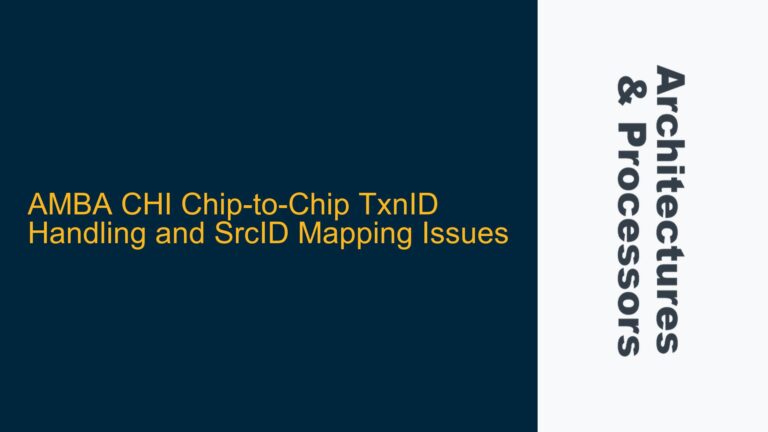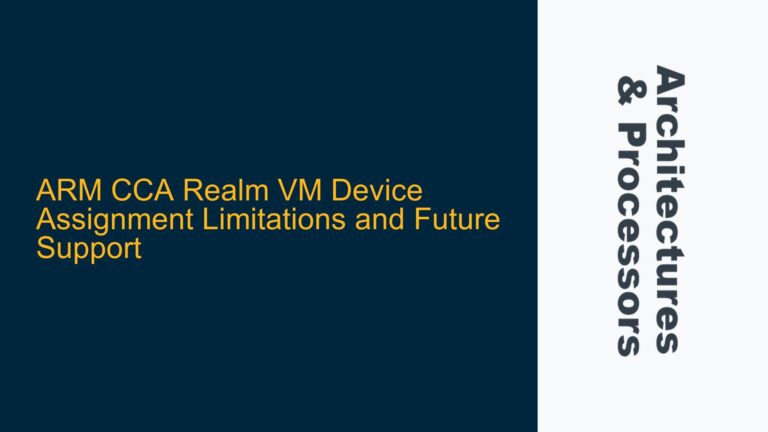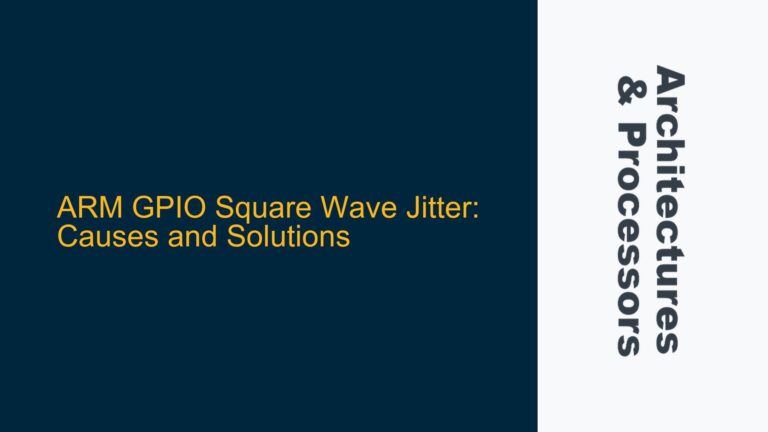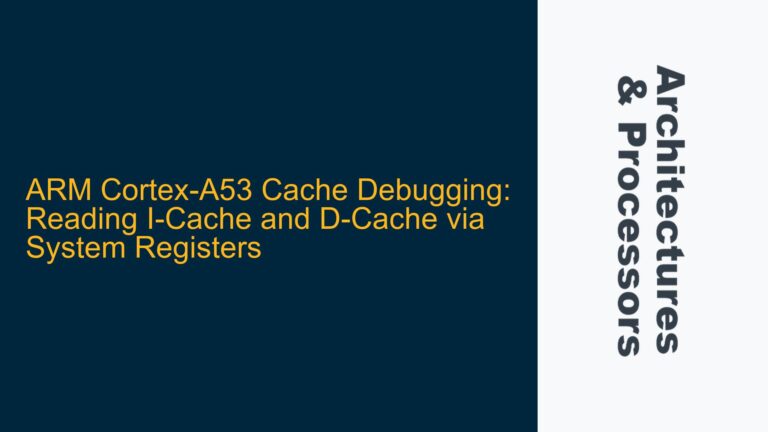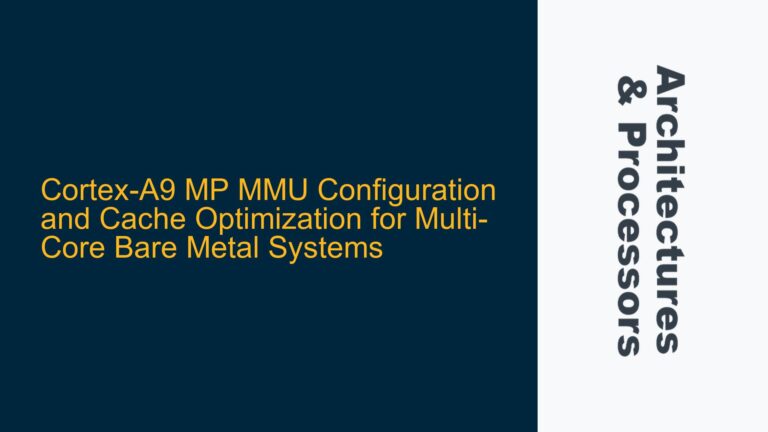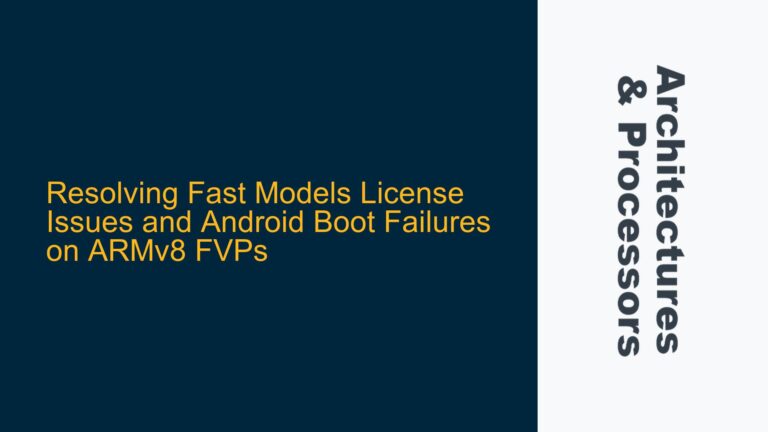ARM Cortex-A GICv3 Interrupt Activation and Priority Drop at EL2
The ARM Generic Interrupt Controller (GIC) version 3 (GICv3) is a sophisticated interrupt management system designed to handle interrupts in complex multi-core systems. When operating at Exception Level 2 (EL2), which is typically used for hypervisor implementations, interrupt handling introduces unique challenges due to the virtualization context. The primary issue revolves around the activation, priority drop, and deactivation of interrupts at EL2, particularly when using the GICv3 architecture.
At EL2, the hypervisor is responsible for managing interrupts for both the host and guest operating systems. The GICv3 provides separate registers for Group 0 and Group 1 interrupts, such as ICC_IAR0_EL1 and ICC_IAR1_EL1 for interrupt acknowledgment, and ICC_EOIR0_EL1 and ICC_EOIR0_EL1 for priority drop and deactivation. However, the question arises whether these registers are accessible or functional at EL2, or if there are alternative mechanisms for handling interrupts in this context.
The GICv3 architecture is designed to support virtualization by providing virtual CPU interfaces and virtual interrupts. However, the direct use of physical CPU interface registers at EL2 is not straightforward. The hypervisor must ensure that interrupts are correctly routed, acknowledged, and deactivated while maintaining the isolation between host and guest environments. This requires a deep understanding of the GICv3 register mappings, the role of the Hypervisor Configuration Register (HCR_EL2), and the interaction between the physical and virtual interrupt controllers.
Misconfigured HCR_EL2 and GICv3 Virtualization Features
One of the primary causes of interrupt handling issues at EL2 is the misconfiguration of the HCR_EL2 register. The HCR_EL2 register controls various aspects of hypervisor behavior, including interrupt routing. In the provided code snippet, the HCR_EL2 register is modified to enable routing of IRQ, FIQ, and aborts from EL0, EL1, and EL2 to EL2. However, this configuration alone is insufficient for proper interrupt handling at EL2, as it does not account for the GICv3’s virtualization features.
The GICv3 introduces Virtual CPU Interfaces (vCPU) and Virtual Interrupts (vINT) to support virtualization. These features require additional configuration in the GICv3 registers, such as the Virtual Interface Control Register (GICV_CTLR) and the Virtual CPU Interface Registers (GICV_IAR, GICV_EOIR). If these registers are not properly configured, the hypervisor may fail to acknowledge or deactivate interrupts, leading to priority drop issues and potential system instability.
Another potential cause is the lack of synchronization between the physical and virtual interrupt controllers. The GICv3 architecture requires explicit synchronization between the physical and virtual interfaces to ensure that interrupts are correctly handled. This synchronization is typically achieved using the GICV_CTLR.EOImode bit, which controls the behavior of the End-of-Interrupt (EOI) operation. If this bit is not set correctly, the hypervisor may fail to deactivate interrupts, causing them to remain pending and potentially leading to interrupt storms.
Additionally, the GICv3 architecture supports two security states: Secure and Non-secure. The hypervisor must ensure that interrupts are correctly routed and handled according to the security state of the system. Misconfiguration of the GICR_CTLR and GICD_CTLR registers, which control the behavior of the redistributor and distributor, respectively, can lead to incorrect interrupt handling at EL2.
Configuring GICv3 Registers and Synchronization Mechanisms for EL2 Interrupt Handling
To address the challenges of interrupt handling at EL2, it is essential to properly configure the GICv3 registers and implement the necessary synchronization mechanisms. The following steps outline the process for enabling and managing interrupts at EL2 using the GICv3 architecture.
First, ensure that the HCR_EL2 register is correctly configured to route interrupts to EL2. The provided code snippet sets the appropriate bits in HCR_EL2 to enable routing of IRQ, FIQ, and aborts from EL0, EL1, and EL2 to EL2. However, this configuration must be complemented by additional settings in the GICv3 registers to support virtualization.
Next, configure the GICv3 Virtual CPU Interface Registers (GICV_IAR, GICV_EOIR) to handle virtual interrupts. The GICV_IAR register is used to acknowledge virtual interrupts, while the GICV_EOIR register is used to deactivate them. Ensure that the GICV_CTLR.EOImode bit is set correctly to control the behavior of the EOI operation. This bit determines whether the EOI operation deactivates the interrupt immediately or after the interrupt handler has completed.
To synchronize the physical and virtual interrupt controllers, use the GICV_CTLR register to enable the required synchronization mechanisms. The GICV_CTLR.U and GICV_CTLR.EOImode bits control the behavior of the virtual CPU interface and the EOI operation, respectively. Ensure that these bits are set according to the requirements of your hypervisor implementation.
Additionally, configure the GICR_CTLR and GICD_CTLR registers to control the behavior of the redistributor and distributor. These registers determine how interrupts are routed and handled based on the security state of the system. Ensure that the GICR_CTLR.DPG1S and GICR_CTLR.DPG1NS bits are set correctly to enable the redistribution of Group 1 interrupts in the Secure and Non-secure states, respectively.
Finally, implement the necessary interrupt handlers in the hypervisor to manage interrupts at EL2. The interrupt handlers should read the GICV_IAR register to acknowledge interrupts and write to the GICV_EOIR register to deactivate them. Ensure that the interrupt handlers are designed to handle both Group 0 and Group 1 interrupts, and that they correctly manage the priority drop and deactivation process.
By following these steps, you can ensure that interrupts are correctly handled at EL2 using the GICv3 architecture. Proper configuration of the GICv3 registers and synchronization mechanisms is essential for maintaining system stability and performance in a virtualized environment.
Detailed Register Configuration and Code Examples
To provide a more concrete understanding of the configuration process, let’s delve into the specific register settings and code examples required for enabling and managing interrupts at EL2 using the GICv3 architecture.
HCR_EL2 Configuration
The HCR_EL2 register is crucial for controlling the behavior of the hypervisor, including interrupt routing. The following code snippet demonstrates how to configure HCR_EL2 to route IRQ, FIQ, and aborts from EL0, EL1, and EL2 to EL2:
MRS X0, HCR_EL2
AND X0, X0, 0xFFFFFFFFF7FFFFFF // Clear the relevant bits
ORR X0, X0, 0x0000000000000038 // Set the bits for routing IRQ, FIQ, and aborts to EL2
MSR HCR_EL2, X0
This configuration ensures that interrupts are correctly routed to EL2, but it must be complemented by additional settings in the GICv3 registers to support virtualization.
GICv3 Virtual CPU Interface Configuration
The GICv3 Virtual CPU Interface Registers (GICV_IAR, GICV_EOIR) are used to handle virtual interrupts. The following code snippet demonstrates how to configure these registers:
// Configure GICV_CTLR to enable the virtual CPU interface
MOV X0, 0x1 // Set the GICV_CTLR.Enable bit
MSR GICV_CTLR, X0
// Configure GICV_CTLR.EOImode to control the EOI operation
MOV X0, 0x2 // Set the GICV_CTLR.EOImode bit
MSR GICV_CTLR, X0
This configuration enables the virtual CPU interface and sets the EOI mode to deactivate interrupts after the interrupt handler has completed.
GICR_CTLR and GICD_CTLR Configuration
The GICR_CTLR and GICD_CTLR registers control the behavior of the redistributor and distributor, respectively. The following code snippet demonstrates how to configure these registers:
// Configure GICR_CTLR to enable the redistribution of Group 1 interrupts
MOV X0, 0x1 // Set the GICR_CTLR.DPG1S bit for Secure state
MSR GICR_CTLR, X0
MOV X0, 0x2 // Set the GICR_CTLR.DPG1NS bit for Non-secure state
MSR GICR_CTLR, X0
// Configure GICD_CTLR to enable the distributor
MOV X0, 0x1 // Set the GICD_CTLR.Enable bit
MSR GICD_CTLR, X0
This configuration ensures that interrupts are correctly routed and handled based on the security state of the system.
Interrupt Handler Implementation
The interrupt handlers in the hypervisor must be designed to manage interrupts at EL2. The following code snippet demonstrates how to implement an interrupt handler that reads the GICV_IAR register to acknowledge interrupts and writes to the GICV_EOIR register to deactivate them:
// Interrupt handler for Group 0 interrupts
EL2_Group0_Interrupt_Handler:
MRS X0, GICV_IAR0_EL1 // Acknowledge the interrupt
// Handle the interrupt
MSR GICV_EOIR0_EL1, X0 // Deactivate the interrupt
ERET
// Interrupt handler for Group 1 interrupts
EL2_Group1_Interrupt_Handler:
MRS X0, GICV_IAR1_EL1 // Acknowledge the interrupt
// Handle the interrupt
MSR GICV_EOIR1_EL1, X0 // Deactivate the interrupt
ERET
These interrupt handlers ensure that interrupts are correctly acknowledged and deactivated, maintaining system stability and performance.
Synchronization Mechanisms
To synchronize the physical and virtual interrupt controllers, use the GICV_CTLR register to enable the required synchronization mechanisms. The following code snippet demonstrates how to configure the GICV_CTLR register for synchronization:
// Configure GICV_CTLR for synchronization
MOV X0, 0x1 // Set the GICV_CTLR.U bit for synchronization
MSR GICV_CTLR, X0
This configuration ensures that the physical and virtual interrupt controllers are synchronized, preventing issues such as interrupt storms and priority drop problems.
Security State Management
The GICv3 architecture supports two security states: Secure and Non-secure. The hypervisor must ensure that interrupts are correctly routed and handled according to the security state of the system. The following code snippet demonstrates how to configure the GICR_CTLR and GICD_CTLR registers for security state management:
// Configure GICR_CTLR for Secure state
MOV X0, 0x1 // Set the GICR_CTLR.DPG1S bit for Secure state
MSR GICR_CTLR, X0
// Configure GICR_CTLR for Non-secure state
MOV X0, 0x2 // Set the GICR_CTLR.DPG1NS bit for Non-secure state
MSR GICR_CTLR, X0
// Configure GICD_CTLR for security state management
MOV X0, 0x1 // Set the GICD_CTLR.Enable bit
MSR GICD_CTLR, X0
This configuration ensures that interrupts are correctly routed and handled based on the security state of the system, maintaining the isolation between host and guest environments.
Conclusion
Proper configuration of the GICv3 registers and synchronization mechanisms is essential for enabling and managing interrupts at EL2 in a virtualized environment. By following the steps outlined in this guide, you can ensure that interrupts are correctly routed, acknowledged, and deactivated, maintaining system stability and performance. The provided code examples and register configurations serve as a practical reference for implementing interrupt handling at EL2 using the GICv3 architecture.

